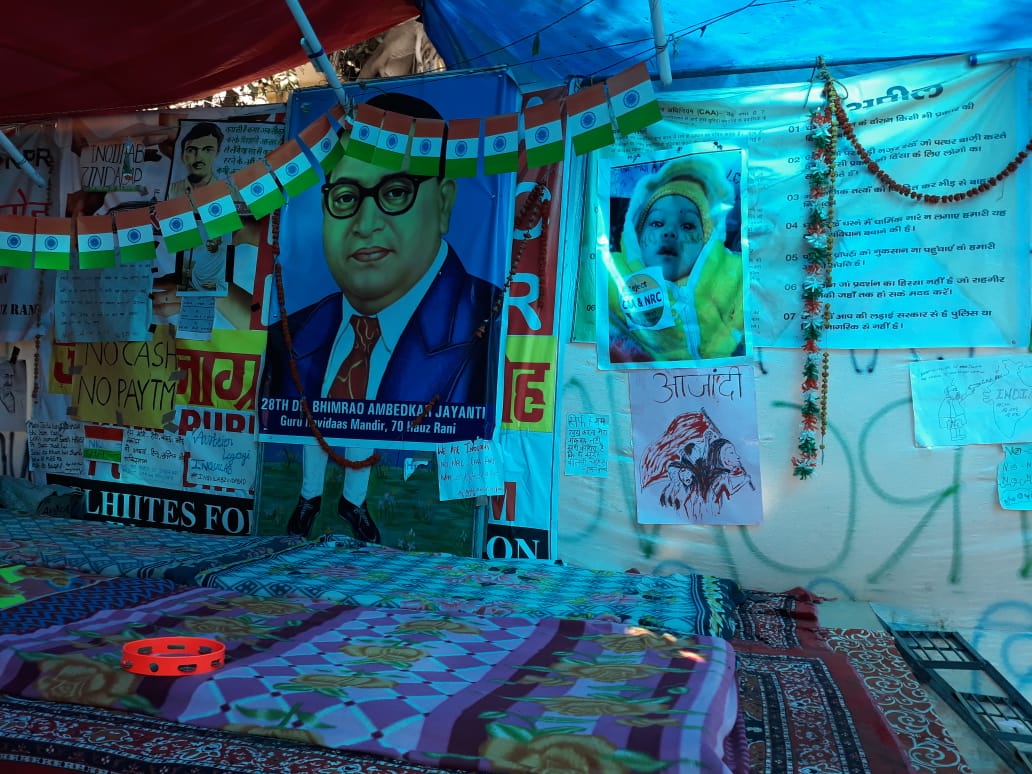The streets of Delhi are currently braided with different protests against the Citizenship Amendment Act (CAA), and the National Register of Citizens (NRC). Starting from the sit-in at Shaheen Bagh, women have come forward in big numbers to claim the streets at different locations – Sundernagri, Chandibagh, Seelampur, Khureji Khas, Azad Market, Turkman Gate, Eidgah, Hauz Rani and Nizamuddin. As the protests continue, several members of the Bhartiya Janata Party have been making statements to label these protests and protestors.
After the attack on students at Jamia Millia Islamia on December 15, Prime Minister Narendra Modi had said that “those indulging in arson can be identified by their clothes”.
As social activist Anjali Bhardwaj says, there seems to be an assumption that those protesting the CAA and the NRC are people of “only one religion”. And that the Act will only affect one community. Besides, comments have also been made about how the protestors are “feasting” on biryani – a food item culturally associated with Muslims.
The Mahila Ekta Yatra was organised in an attempt to overturn these narratives.

A sit-in protest in Delhi.
To that end, over three days between February 14 and February 16, a group of women travelled to the different sit-in protests across Delhi to read the Preamble in multiple languages. The idea behind the Yatra, and reading of the Preamble in different languages was to reflect the diverse nature of identities associated with the protests.
Speaking to LiveWire, one of the organisers said:
The idea of the Constitution of India, the idea which we’re trying to save, it’s soul lies in knowing that there is unity in diversity. This unity should not be understood as uniformity. It doesn’t mean that we are all the same – belong to the same religion, speak the same language, eat the same food, wear the same clothes. It means that we’re all Indians, but we’re all multiple. We belong to different genders, have different sexual preferences, speak different languages, come from different regions and culture. We thought reading the preamble in different languages was a good way to communicate this.
Language in India is both a uniting and a dividing force. Historically, many states were formed on linguistic grounds. However, these states still contribute to the larger idea of India as a nation state. Moreover, we do not always speak in a single language. They meander through dialects, and are often comfortable in comprehending a language other than their mother tongue.
Also read: Love Letters for Shaheen Bagh From Around the World
In every day speech, we find ourselves switching between languages, borrowing some words from one, and some from another. At protest sites too, one can overhear conversations that make these protest sites spaces of ambiguity. Reading the Preamble in multiple languages further problematises this ambiguity.

A sit-in protest in Delhi.
The protestors start reflecting on questions like, “Who is this person?”, “Which community do they come from?”, “What do their clothes say about them?”, “How can I know who they are?” and so on.
And what happens when you fail to answer these questions? What happens when you fail to know who they are?
You move away from labels meant to separate and group you together. You realise that identity is almost always multiple. And when identity is multiple, the state doesn’t know who to target. It doesn’t know if it must target Hindus, Muslims, Bengalis, Gujaratis, Marathis, or simply, all the people of India.
In moving across languages, have we, the people of India, found our constitution in translation?
Muskan is an aspiring filmmaker, currently working as an intern with The Wire. She is an English Literature graduate and a Young India Fellow.
All the images have been provided by the author

